WASTENOT

a digital tool to assist people with their groceries and meals to minimize food waste
WasteNot
UX research, product design, UI design, UX design
in collaboration with WanQing Wang
year: 2024/25
Every year, a significant amount of edible food is thrown away, often due to lack of planning or poor storage habits. Insipired by the mission to create a sustainable future by ensuring that good food does not go to waste, this project tackled the question on how a digital tool might assist consumers in better planning their food purchases to minimize waste. From initial research and problem framing to concept development, UX/UI design, and prototyping we designed an app that integrates food preservation, shopping, and inventory management to reduce food waste.
Approach
The first step was to gather comprehensive insights into the factors influencing food waste, consumer behaviour, and challenges within the food supply chain. Only by understanding motivations, barriers, perceptions, and regulatory constraints, effective strategies and solutions can be developed. Research methods included obersations in supermarkets, interviews and cultural probes with consumers and supermarket employees as well as literature reviews to get insight into why and how food waste gets generated by consumers as well as supermarkets.
The synthesis of this research led to a focus on households and consumers as they are proven to be the stakeholder with the biggest contribution to food waste and therefore most potential to influence a reduction as well as the user group, most likely to change their behaviour.
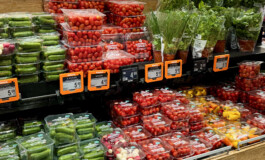
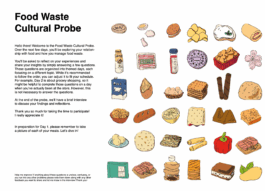
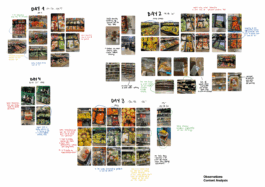
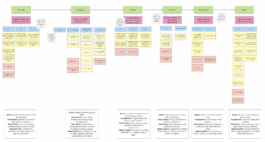
Ideation
Using these insights, we ran a Crazy Eights session to rapidly sketch solution ideas. We clustered these into two directions — consumer-based and business-based — and developed three key concepts: a food inventory app, a subscription model for imperfect produce, and a supermarket awareness campaign.
After evaluating each against our importance–difficulty matrix, we chose to move forward with the inventory management app. This concept addressed the two most common pain points: poor planning and forgetfulness around food at home. We created a textual wireframe and tested feature relevance through a co-creation session using a bullseye card-sorting method.
The session yielded strong insights, which we analyzed through thematic clustering to refine our focus. This led to our central design question: “How might we design an app that helps reduce food waste by integrating preservation, shopping, and inventory features in a simple and customizable way?”
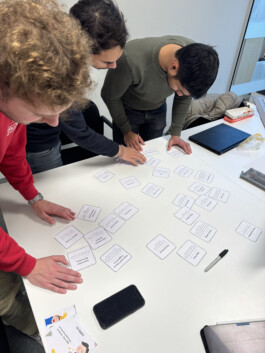
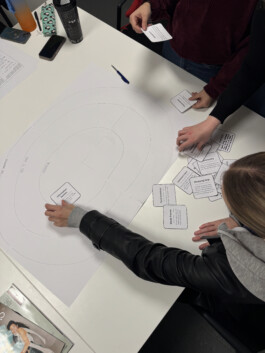
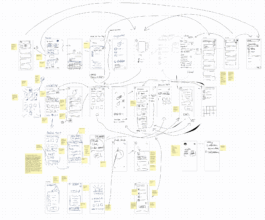
Result
The final design is an app that helps users make the most of their groceries by combining three core functions: it tracks food inventory, suggests recipes based on what’s already at home, and supports smart shopping by generating and managing grocery lists. Together, these features aim to reduce food waste by improving planning, awareness, and day-to-day decision-making in the kitchen.

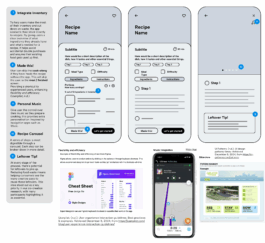
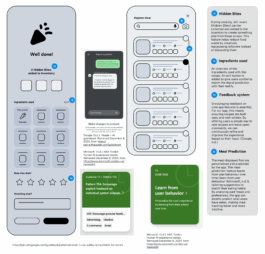
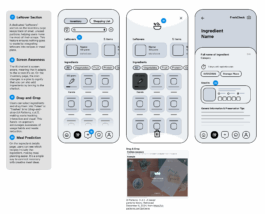

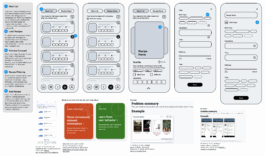
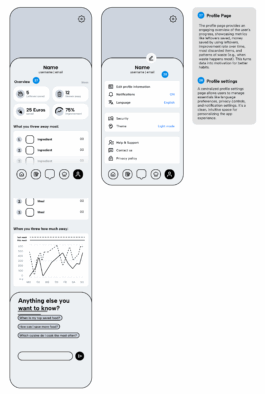
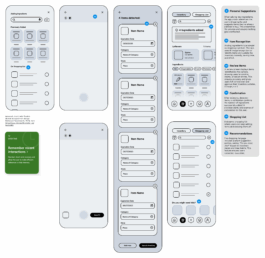
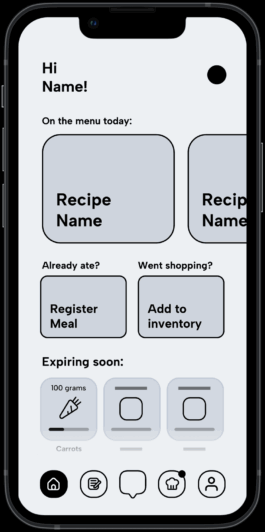

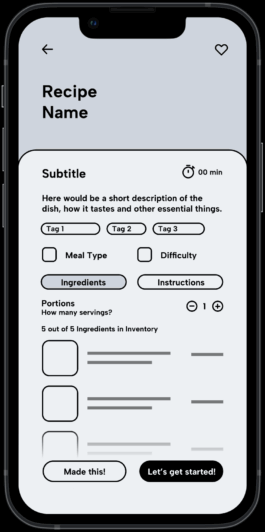
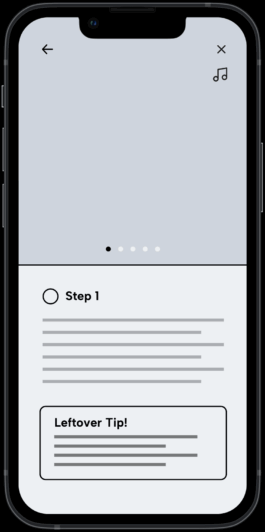
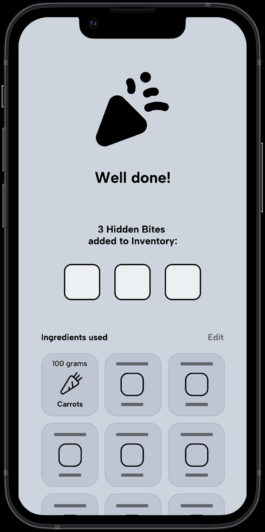
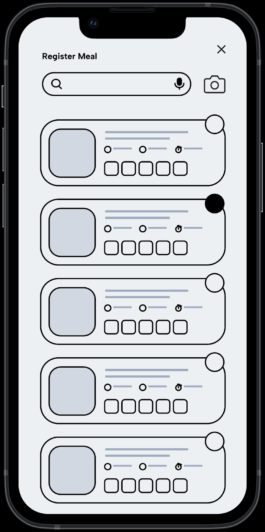
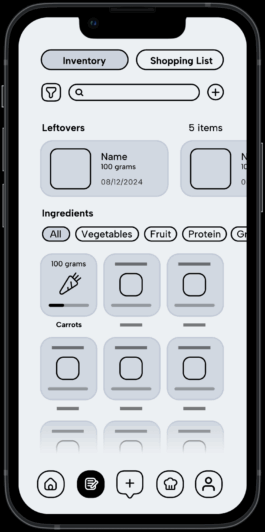
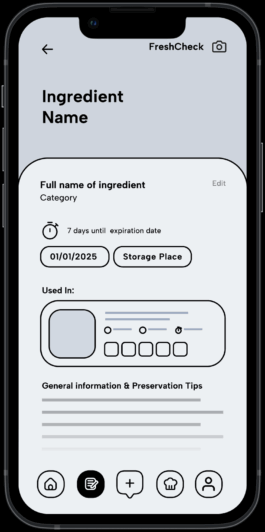
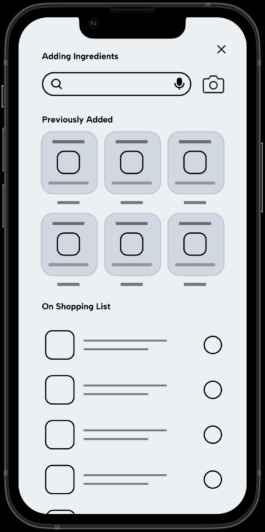
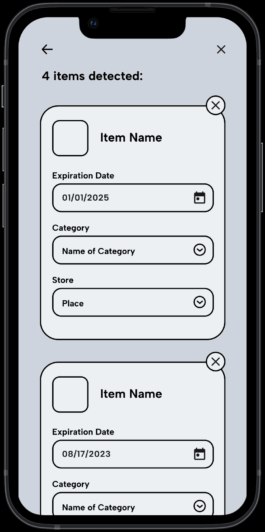
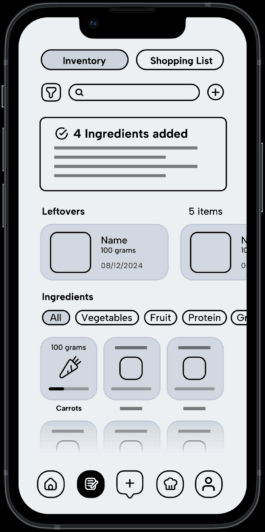
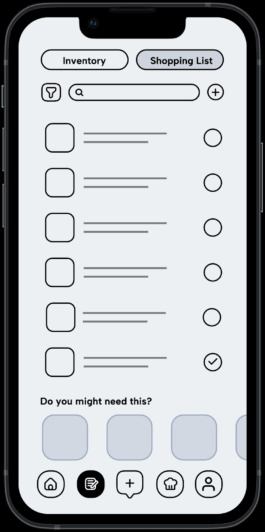
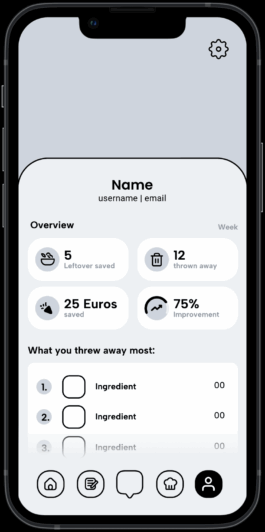
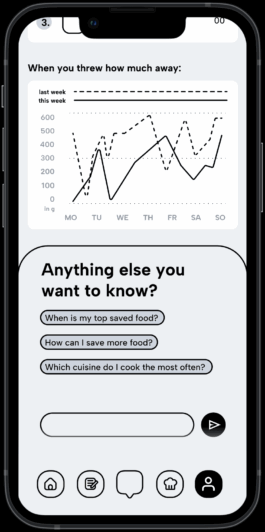
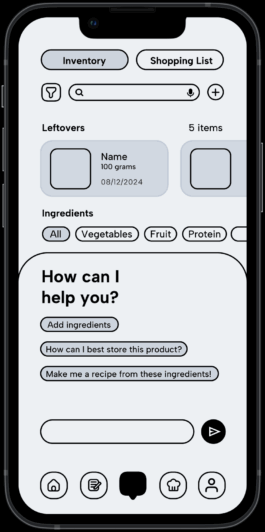
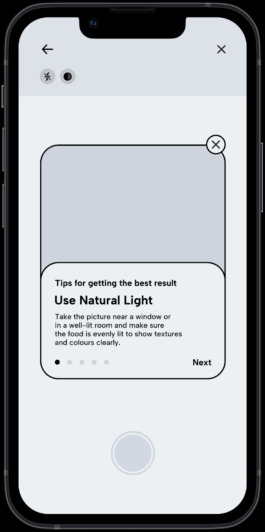
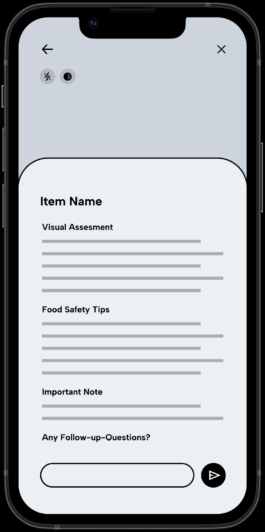
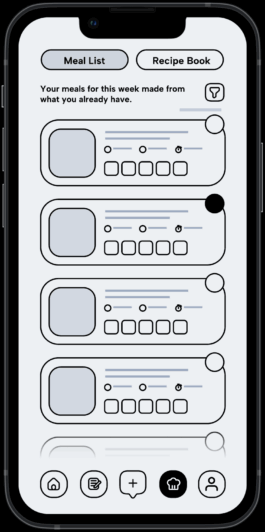
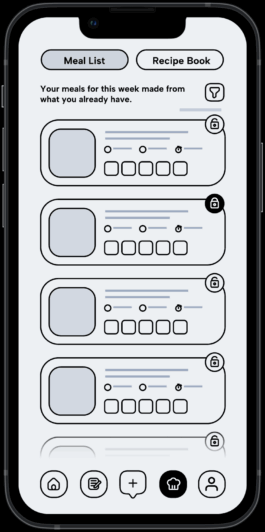
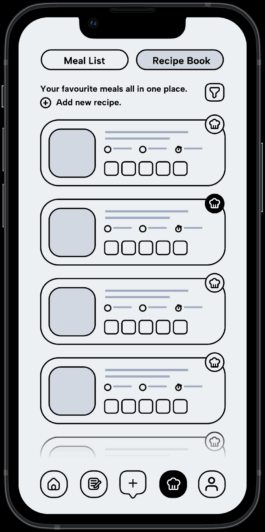

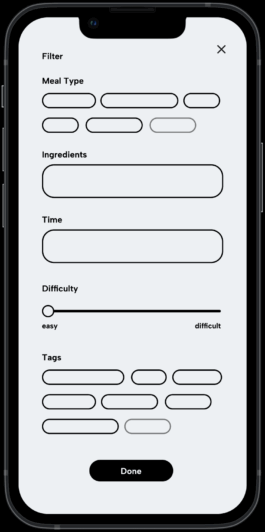
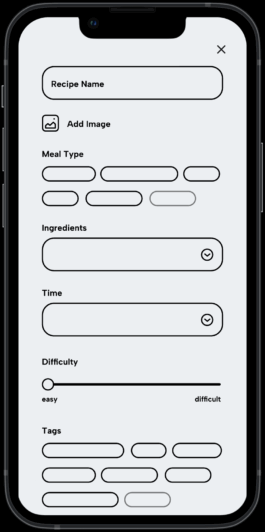

Wastenot

a digital tool to assist people with their groceries and meals to minimize food waste
WasteNot
UX research, product design, UI design, UX design
in collaboration with WanQing Wang
year: 2024/25
Every year, a significant amount of edible food is thrown away, often due to lack of planning or poor storage habits. Insipired by the mission to create a sustainable future by ensuring that good food does not go to waste, this project tackled the question on how a digital tool might assist consumers in better planning their food purchases to minimize waste. From initial research and problem framing to concept development, UX/UI design, and prototyping we designed an app that integrates food preservation, shopping, and inventory management to reduce food waste.
Approach
The first step was to gather comprehensive insights into the factors influencing food waste, consumer behaviour, and challenges within the food supply chain. Only by understanding motivations, barriers, perceptions, and regulatory constraints, effective strategies and solutions can be developed. Research methods included obersations in supermarkets, interviews and cultural probes with consumers and supermarket employees as well as literature reviews to get insight into why and how food waste gets generated by consumers as well as supermarkets.
The synthesis of this research led to a focus on households and consumers as they are proven to be the stakeholder with the biggest contribution to food waste and therefore most potential to influence a reduction as well as the user group, most likely to change their behaviour.




Ideation
Using these insights, we ran a Crazy Eights session to rapidly sketch solution ideas. We clustered these into two directions — consumer-based and business-based — and developed three key concepts: a food inventory app, a subscription model for imperfect produce, and a supermarket awareness campaign.
After evaluating each against our importance–difficulty matrix, we chose to move forward with the inventory management app. This concept addressed the two most common pain points: poor planning and forgetfulness around food at home. We created a textual wireframe and tested feature relevance through a co-creation session using a bullseye card-sorting method.
The session yielded strong insights, which we analyzed through thematic clustering to refine our focus. This led to our central design question: “How might we design an app that helps reduce food waste by integrating preservation, shopping, and inventory features in a simple and customizable way?”



Result
The final design is an app that helps users make the most of their groceries by combining three core functions: it tracks food inventory, suggests recipes based on what’s already at home, and supports smart shopping by generating and managing grocery lists. Together, these features aim to reduce food waste by improving planning, awareness, and day-to-day decision-making in the kitchen.































